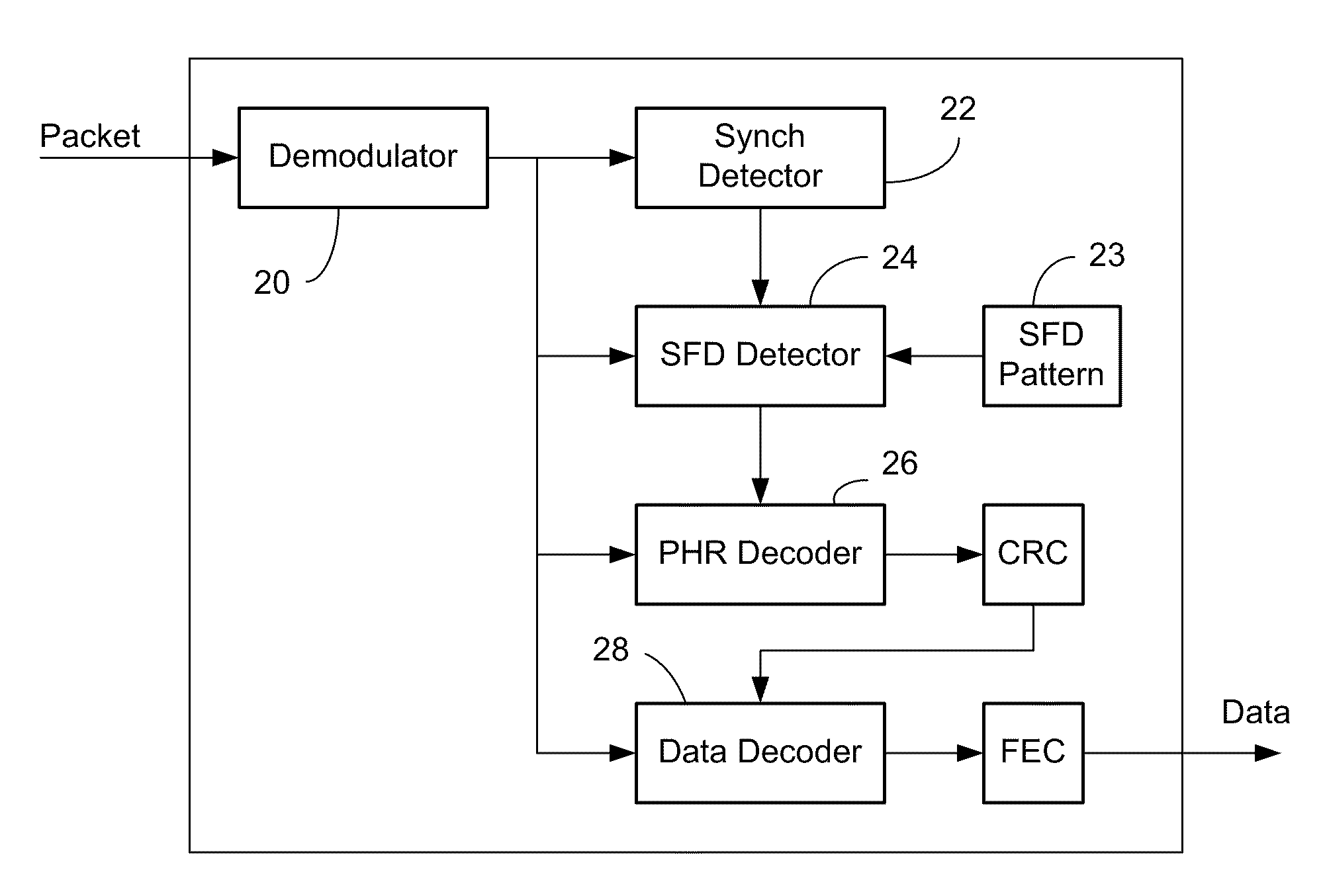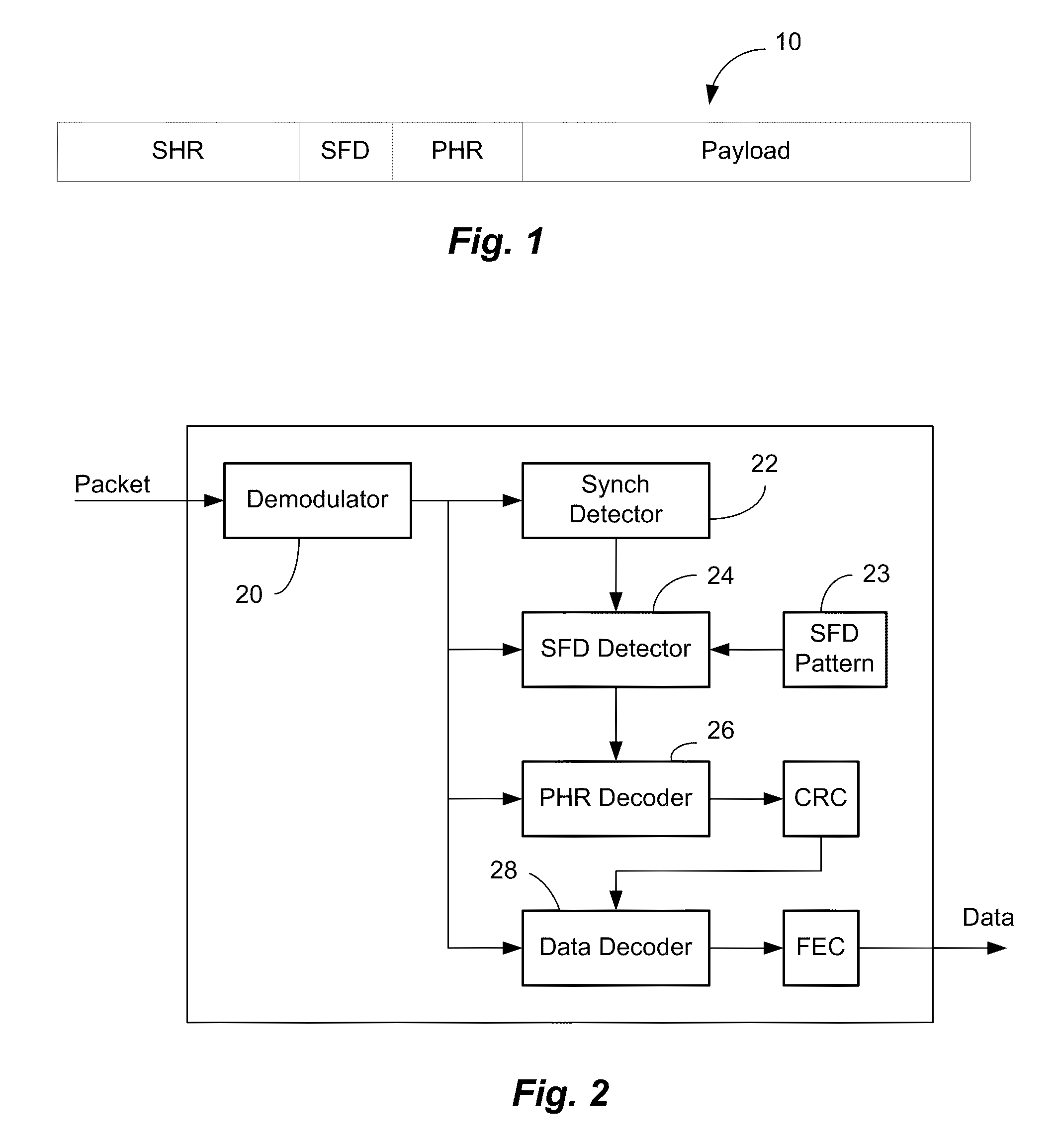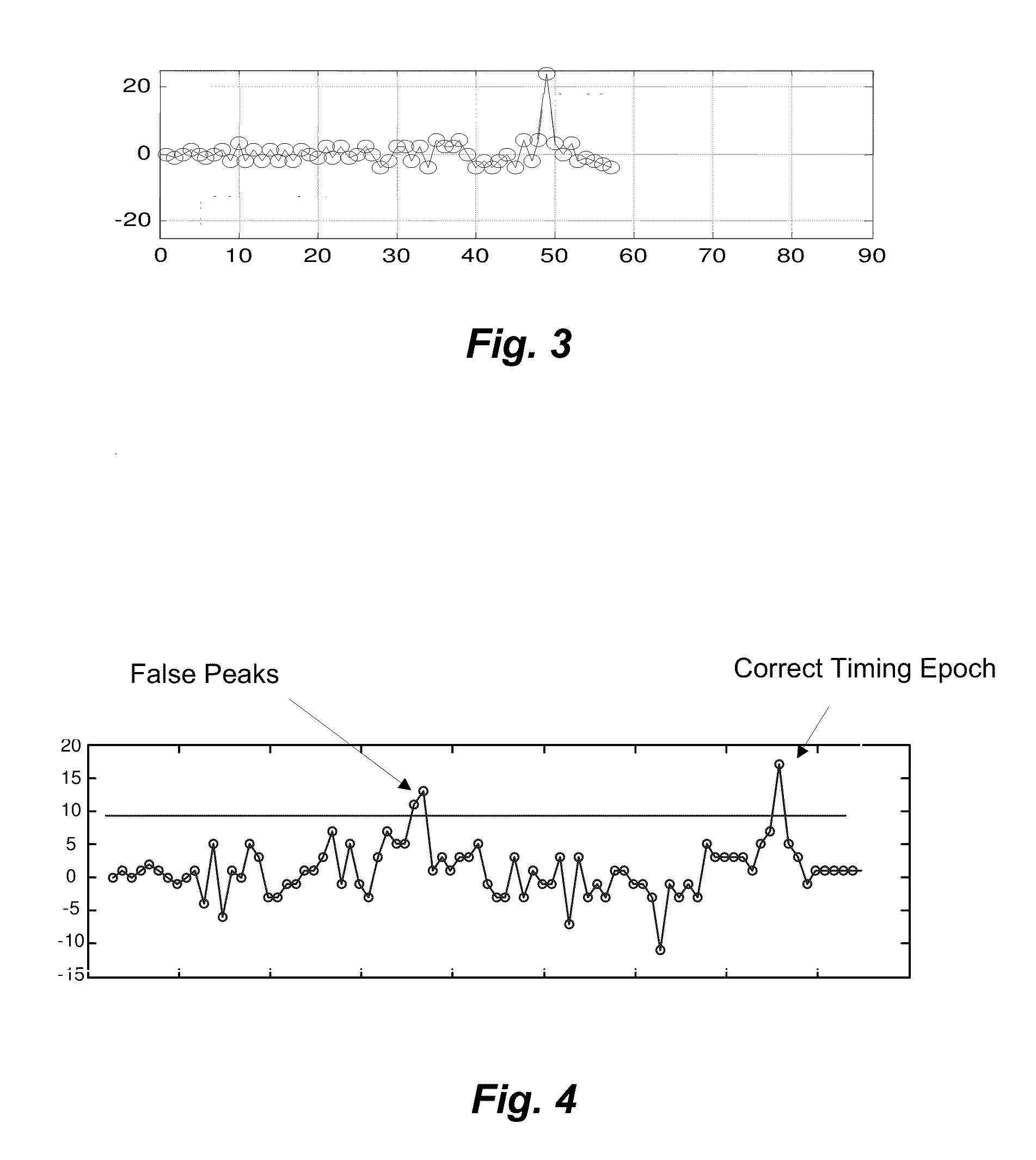Detection of start frame delimiters in a wireless digital communication system
a digital communication system and start frame technology, applied in the field of wireless digital communication systems, can solve the problems of reducing affecting the detection efficiency of sfd, and wasting processing resources, so as to reduce the number of missed sfd instances
- Summary
- Abstract
- Description
- Claims
- Application Information
AI Technical Summary
Benefits of technology
Problems solved by technology
Method used
Image
Examples
example 1
[0039]A 16-bit SFD was chosen, represented in hexadecimal notation as 0xF3A0. The PHR comprised 16 bits of information indicative of the manner in which the payload was to be demodulated. A BCH (40, 16) truncated error-correcting code was employed to encode the PHR.
[0040]A simulation was constructed to measure performance of a network in which a packet, containing the foregoing SFD and PHR, was transmitted in the presence of additive white Gaussian noise, pseudo static Rayleigh fading. The results indicated that the sensitivity for combined SFD detection and subsequent correct PHR detection were improved by approximately 4-6 dB over a detection mechanism that did not employ the procedure depicted in FIGS. 5A and 5B. At the same time, the false detection rate was approximately 1e−3 if two parity bits are employed in the header. Addition of a third parity bit reduced the false error rate to a point that was not statistically significant.
[0041]In a variation of the foregoing technique,...
PUM
 Login to View More
Login to View More Abstract
Description
Claims
Application Information
 Login to View More
Login to View More - R&D
- Intellectual Property
- Life Sciences
- Materials
- Tech Scout
- Unparalleled Data Quality
- Higher Quality Content
- 60% Fewer Hallucinations
Browse by: Latest US Patents, China's latest patents, Technical Efficacy Thesaurus, Application Domain, Technology Topic, Popular Technical Reports.
© 2025 PatSnap. All rights reserved.Legal|Privacy policy|Modern Slavery Act Transparency Statement|Sitemap|About US| Contact US: help@patsnap.com



